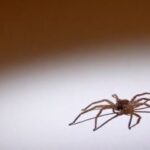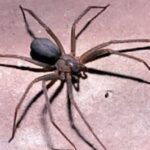There’s a little red bump on your arm but you don’t know how it got there. Before you quickly dismiss it, better make sure it’s not something that will go from a little-bitty red bump to a large hole in your arm. Not to alarm you too much, but indeed, if you’re bitten by, say, a Brown Recluse Spider, what starts out as a little something on your arm, if not treated, even within 24 hours that little something could become a hole of missing flesh and muscle. So, let’s get into how to identify insect bites.
Admittedly, the best way to identify insect bites beforehand is to see them either in pictures or on another person. However, there are some simple things you can look for that are tell-tale markers of an insect bite.
How to Identify Insect Bites ( Spider )
Is the mark you suspect is an insect bite not one mark, but two small marks right next to each other? If so, there is a good possibility a spider has sunk its fangs into you. Usually spiders want no part of people. Almost without fail, the only way a spider is going to bite you is as an instinctive last resort that it doesn’t die. However, if you unknowingly caused a spider to use its last defensive move, a bite, only to realize it later, you want to make sure it wasn’t a Brown Recluse. Yes, there are other spider bites about which you want to be sure; but, Brown Recluses are the most common dangerous spider bite.
As previously mentioned, two tiny marks right next to each other probably means it was a spider, although sometimes it could be another insect that leaves two tiny marks right next to each other. Again though, more than likely it’s a harmless spider bite. Still, keep a close eye on where the bite is, and yourself, because if it was a poisonous spider, you’re going to have to act fast if you recognize it was more than just a harmless spider but a poisonous one that bit you.
When a Brown Recluse bites you, the skin will get red where you were bitten, then it will get white, then gets a bullseye shape, and then, if you didn’t realize you were bitten up to that point, that’s all going to change once it starts blistering after becoming a bulls eye shape.
Waste no time at that point. I personally know several persons who have been bitten by the Brown Recluse spider, two of them more than once. If you don’t act quick, before long the poison that’s already been at work on your flesh is going to become quite evident by the hole now visibly forming on you. No, you can’t get that flesh back where a hole now exists. Once the poison destroyed the flesh, you have to live with the scar it left. Although, if it’s a small hole and subsequent scar, it may hardly be noticeable.
How to Identify Insect Bites ( Ants )
Now ants are a different story when it comes to when and why they’ll bite you. An ant will bite you whenever and wherever it wants. Unlike spiders, ants aren’t looking to run away from you: they’re on the offensive almost 24/7.
Most of us have been bitten by some sort of ant, and usually it’s more of a mild nuisance than anything serious. However, don’t let a Fire ant, much less a bunch of them, bite you. Not only can it be painful, but if enough of them sting some persons, it becomes a life-threatening situation.
How do you identify what the insect bite of a Fire Ant looks like, if you see you were obviously bit by something but don’t remember getting stung or bit?
The Fire ant sting or bite starts out much like any other ant bite but eventually leaves a pus-filled lesion that may or may not be painful. Burning and itching may be associated with the sting at first, too, and then actually become painful later.
How to Identify Insect Bites ( Fleas )
Oh those pesky, pesky fleas! You may have a pet or yard that has them, and you can’t believe it, but the darn things have bitten you, too. At least you think, it’s a flea bite, as impossible as it may seem.
How to identify a flea bite is to look for those bothersome little red nodules that form where the little pesky flea was sucking the blood out of you. Some persons are very allergic to fleas, and the histamine coursing through your body, causing you to itch, can become overwhelming. If you have a bite mark that you’re not sure what it is that bit you, if you can’t stop scratching it for what seems forever, it may very well be a flea bite.
Click here to view a slideshow of insect bites on WebMD to further information on how to identify insect bites.
http://www.webmd.com/allergies/slideshow-bad-bugs


